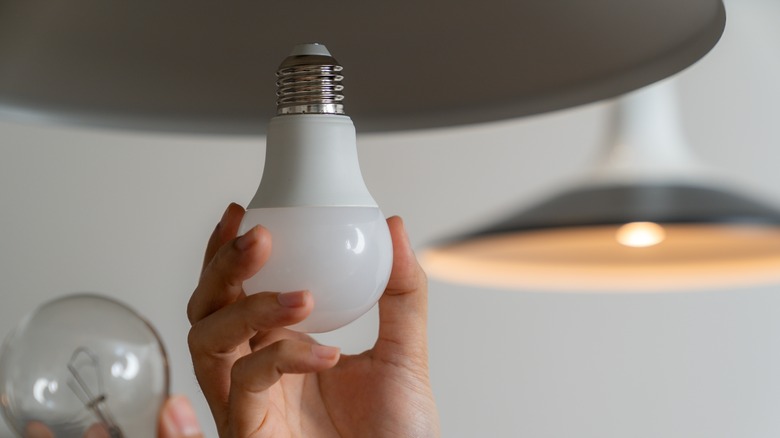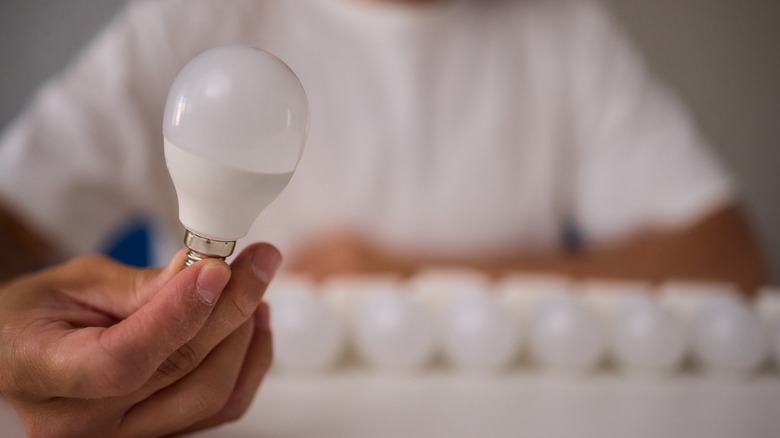The Sneaky Reason Your LED Lightbulbs May Not Be Lasting As Long As Expected
LED(light-emitting diode) bulbs are a popular choice, offering up to 90% greater efficiency than their incandescent counterparts. By cycling an electrical current through a microchip, the bulbs produce energy-efficient illumination that doesn't quickly burn out. The boxes your lightbulbs come in often make some big claims about their lifespan, but those claims sometimes don't match up with reality. If you've purchased LED bulbs, thinking they'll last five to 10 years or more, only to have them fail prematurely at around one or two years, you might feel like you've done something wrong. This may not be the case, though. One of the reasons your LED bulbs aren't lasting as long as you expected them to is due to how they are advertised. Companies use language such as "up to" and "estimated" on product boxes, which can be misleading.
You may have noticed advertising on LED bulb boxes that says things like "up to 7 years" or "estimated life of 13 years." The light bulb manufacturer isn't pulling these numbers out of a hat. The number on the box is based on an average found during testing. The specifics of the tests, though, are sometimes not provided. Many of these products advertise lifespan based on estimated usage, and if you use the bulbs more or less than this, that will impact the lifespan. If you read the box closely, you may find that the manufacturer promises something to the effect of "an estimated life of 13 years", but the calculation is based on three hours of use per day. If you use the bulbs more than three hours a day in this circumstance, you may end up disappointed when they burn out in just a few years.
How to get the most out of your LED bulbs
Marketing ploys aside, LED light bulbs will last you much longer than traditional incandescent bulbs — and they're more energy efficient, too, which means lower electricity bills. While they may not last the years promised on the box, there are ways to extend their lifespan. Ensuring that the wattage of the bulb matches the voltage of the outlet is one way to do this. A voltage that's too high will damage the bulbs, necessitating early replacement. It's also essential to ensure your bulbs aren't screwed in too tightly, as this can lead to an early demise, as well.
Protecting your LED bulbs from extreme conditions will also extend their life. If your home is either too hot or too cold, for example, this can reduce the efficiency of an bulb. Moisture and humidity can also damage them, leading to the need for replacement. Installing LED bulbs in the proper fixtures is another way to prevent early burnout. This is because if the bulbs are encased in a fixture that is too small, they will overheat. When selecting an LED for an enclosed fixture, ensure there is sufficient space for it to operate properly.
LED light bulbs remain an energy-efficient choice over other bulb types, and ensuring they last as long as possible is relatively straightforward. If you've got a bulb that has already met the end of its life, though, you can reuse it around your home and garden. Bulbs can be upcycled into ornaments or made into garden displays. If you make a few adjustments to how, when, and where you use these bulbs, though, you may be able to get close to having them light your home for the number of years written on the box.

